Caramelized onions are not only delicious to eat but are incredibly versatile in their use. Let's learn how to caramelize onions!
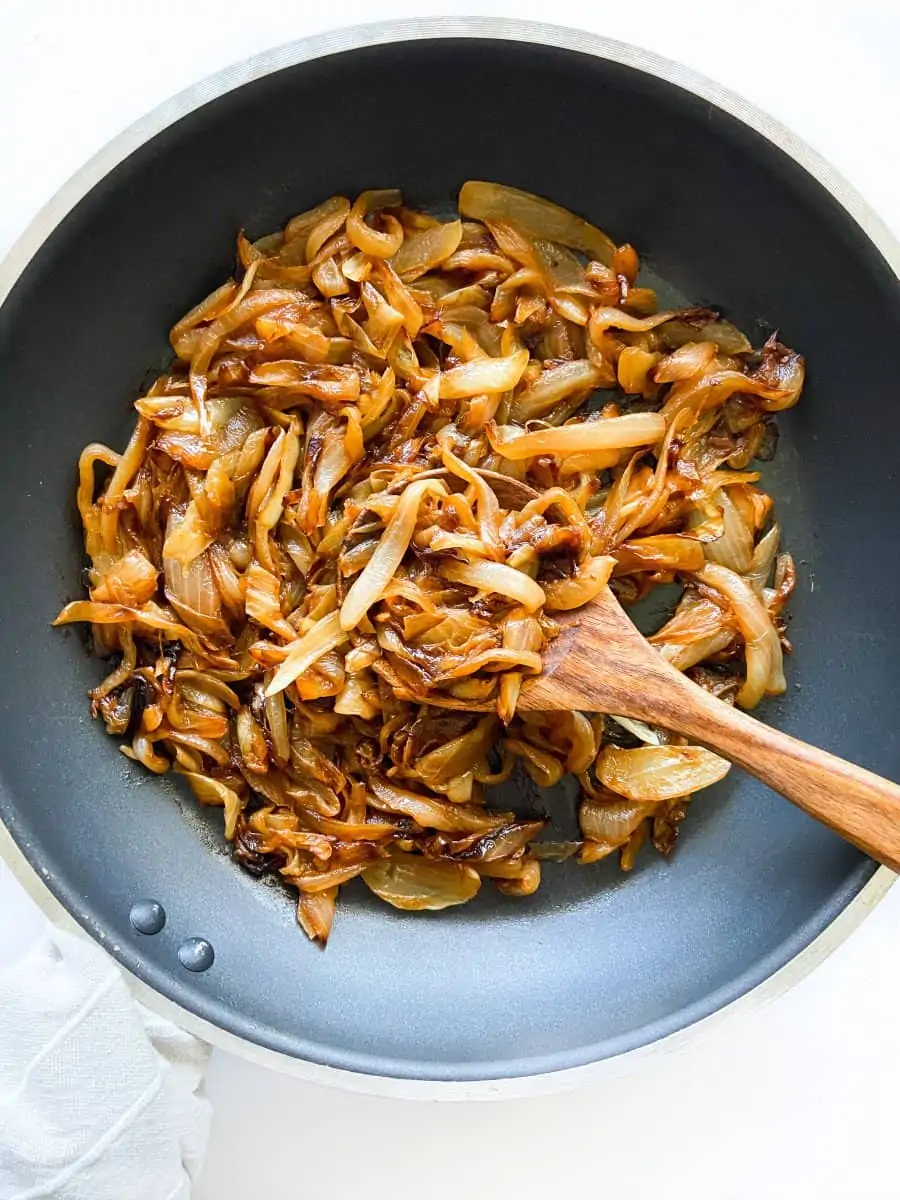
Cooking onions slowly in butter and olive oil results in a sweet, delicious condiment that's perfect in sandwiches, tossed with pasta, or scooped atop meats. While this cooking process is simple, it does take some time.
Why do onions caramelize? There are natural sugars within onions. While raw onions are pungent and sharp to the taste, cooked onions are sweet. Why? As the onions cook, the sugar molecules within them break down into smaller, simple molecules. This breakdown is why cooked onions brown as they cook and develop sweetness.
Jump to:
How to Make Caramelized Onions
Slice the onions - Trim the tip and end off of each onion. Carefully cut the onions in half and remove the skins. Thinly slice each half, slicing from root to stem. Do your best to cut in even slices for the most consistent cooking.
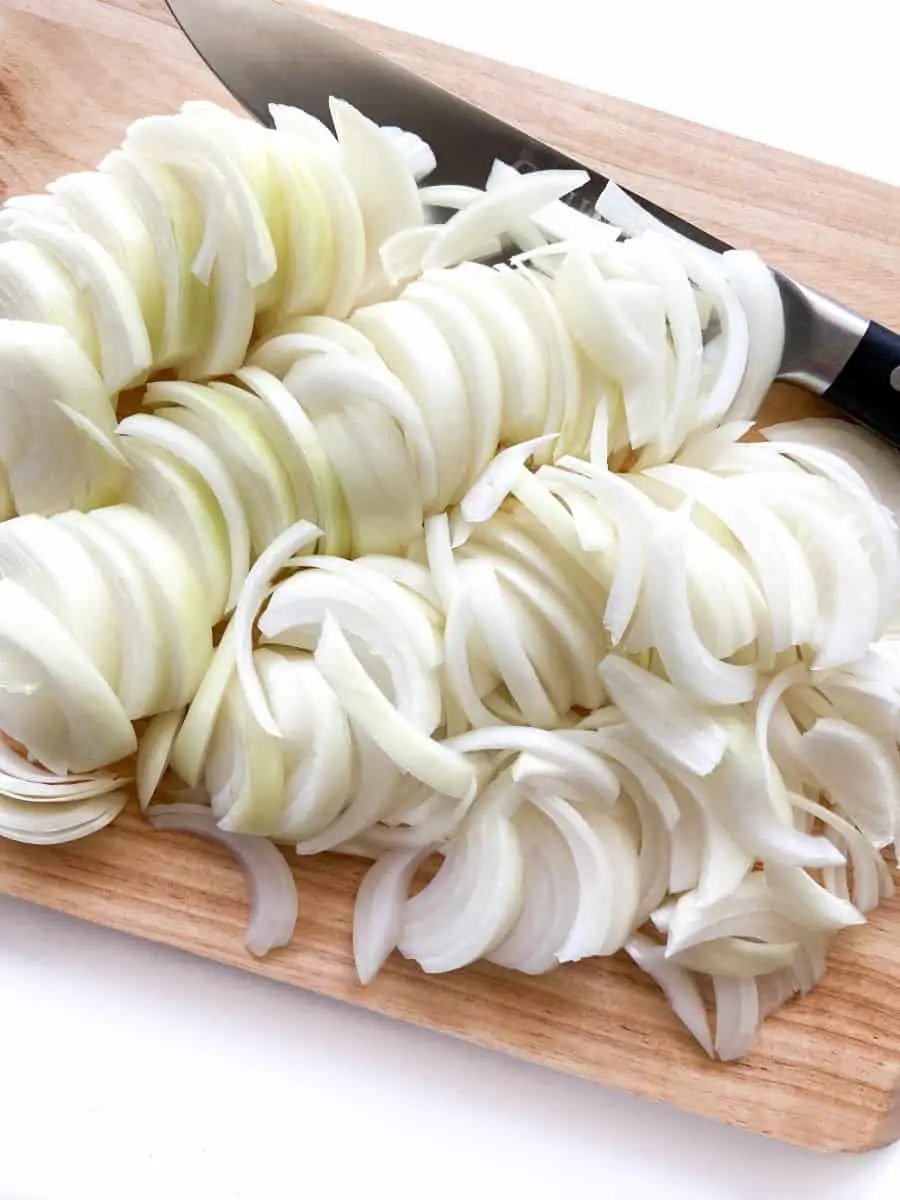
Heat the pan and fat (olive oil and butter) - Heat a large skillet (see below for pan suggestions) over medium-high heat. Melt the butter with olive oil.
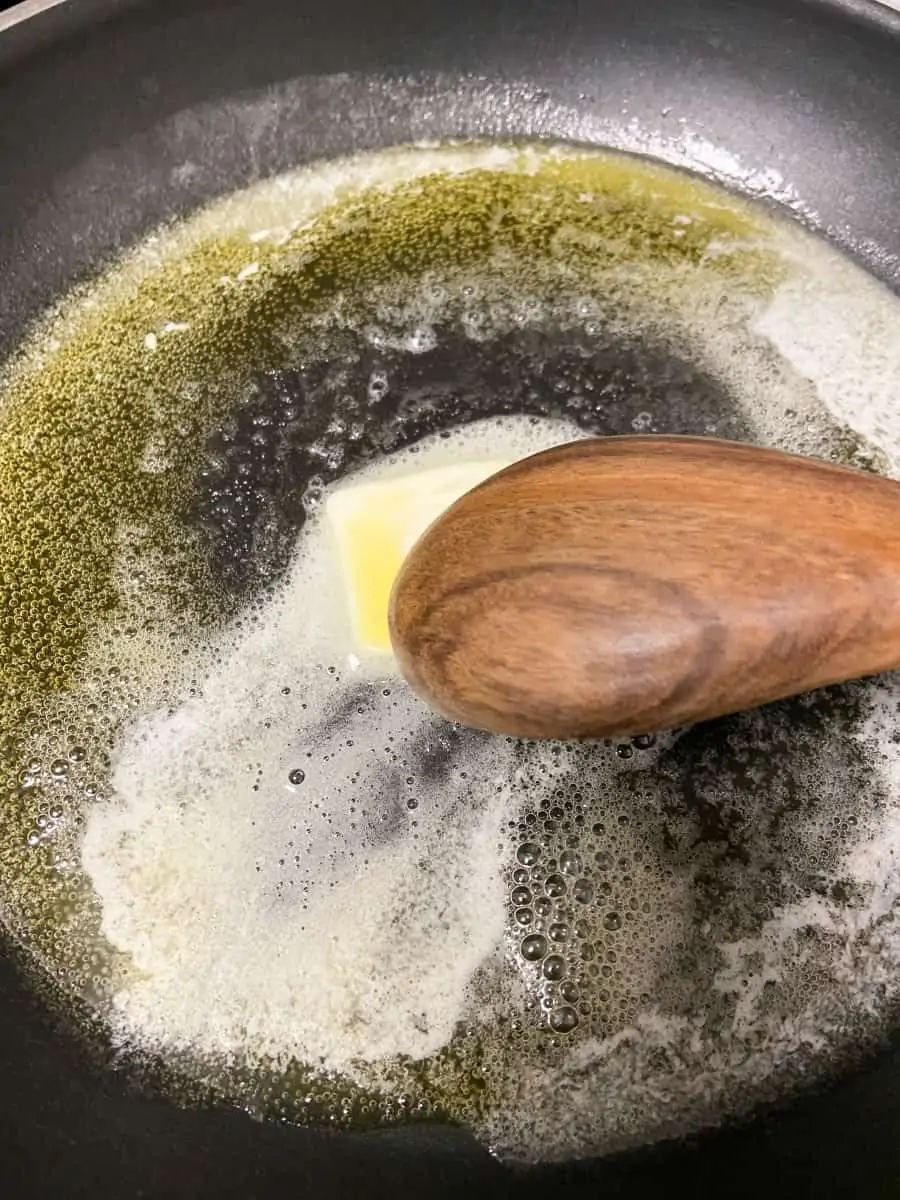
Add the onions and coat - Transfer all of the onions into the pan and evenly coat in the butter-oil mixture.
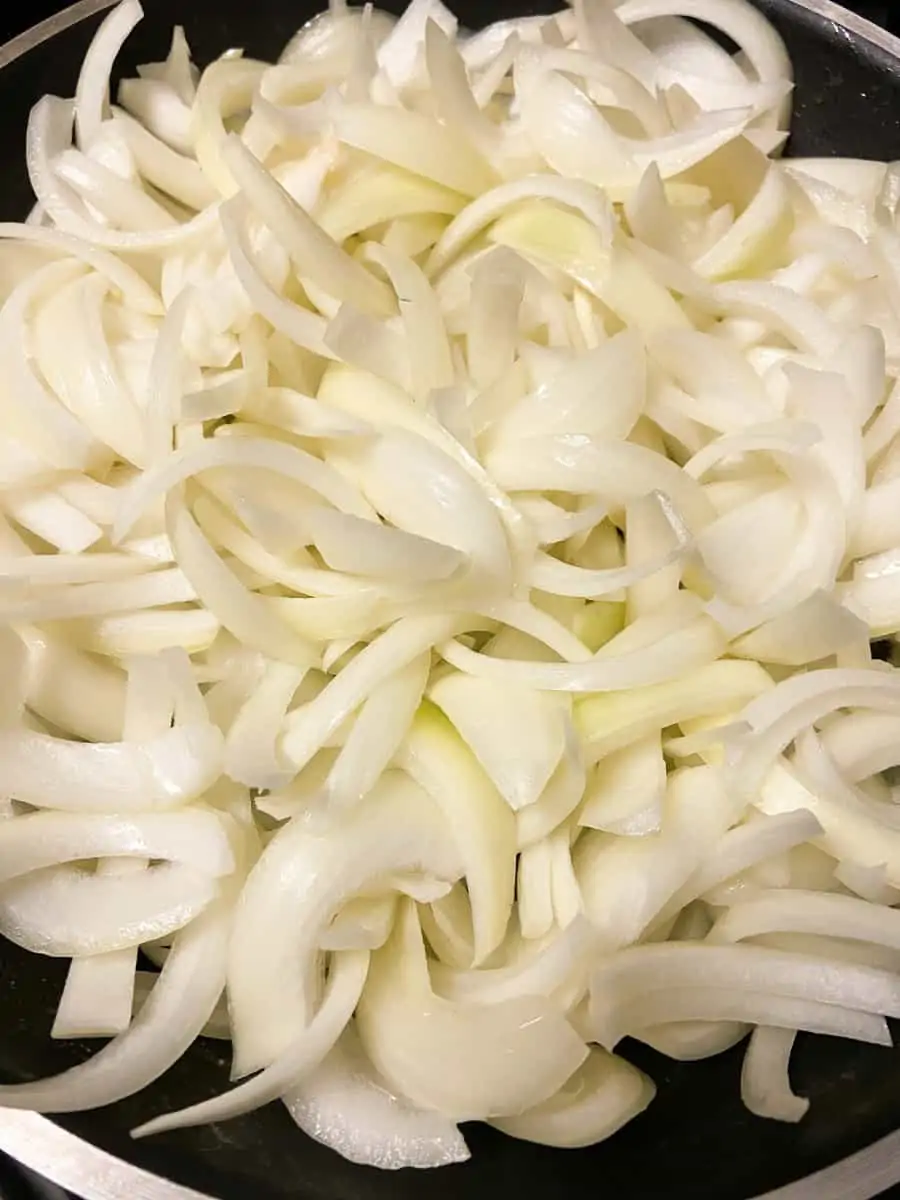
Add salt and reduce the heat slightly - After 10 minutes of cooking, sprinkle a pinch of salt over the onions and toss to coat. Reduce the heat to medium.
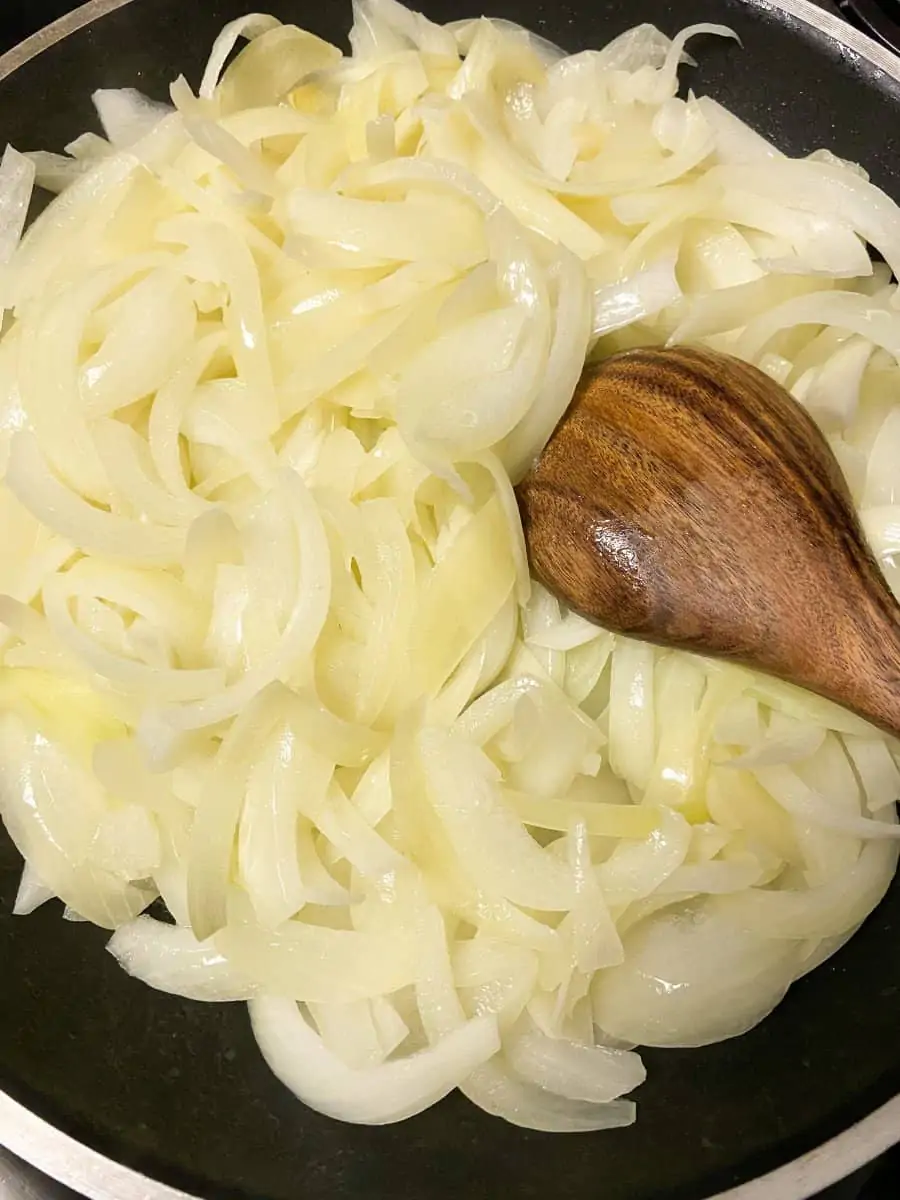
Allow onions to cook, stirring every so often - Allow the onions to cook, stirring about every five minutes or so, to ensure the onions do not burn or stick to the pan. *Do not over-stir or the onions will not brown. Add a little extra oil or a small amount of water if you find that the onions are charring. Cook for 20-30 minutes, until brown in color and desired doneness, is achieved.
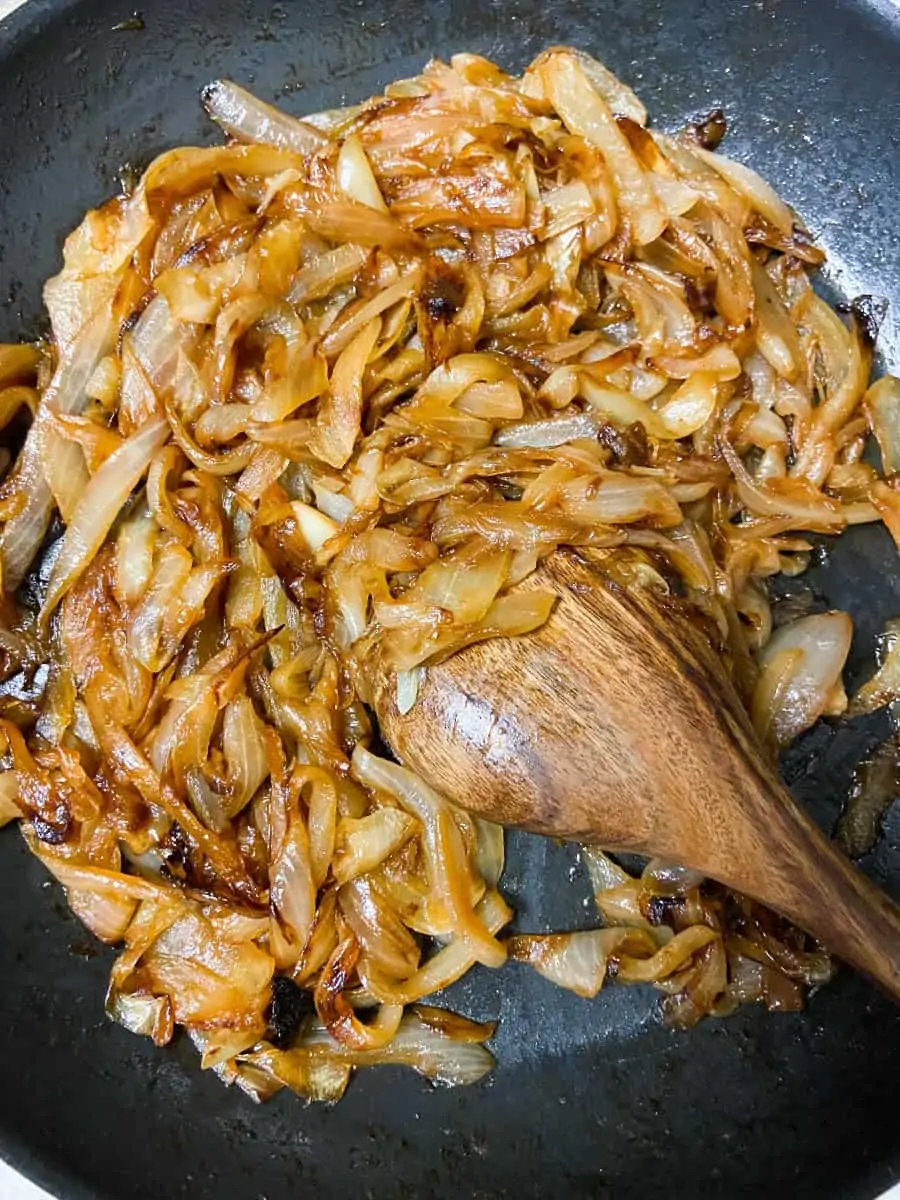
Frequently Asked Questions
Stored in an airtight container in the refrigerator, the onions will stay good for up to one week.
While the most common onions to use when caramelizing are yellow and sweet onions, think Vidalia, you can use red and white onions too.
It is better to add salt at the beginning of cooking. The salt helps draw out moisture from the onion cells, which helps the onion's natural sugars brown more evenly.
Sugar adds a delightful sweetness to the onions, while also assisting in the caramelization process. Adding sugar will help speed up the cooking time.
Ultimately, caramelization is a process that should be done slowly and on its own accord. However, adding a small amount of sugar or baking soda can help speed up the process.
The best pans to use for this cooking process are cast iron and stainless steel. These heavy-duty pans distribute the heat evenly for the best results. However, non-stick pans (like I used), can also be used and better assist in keeping the onions from sticking to the pan and burning.
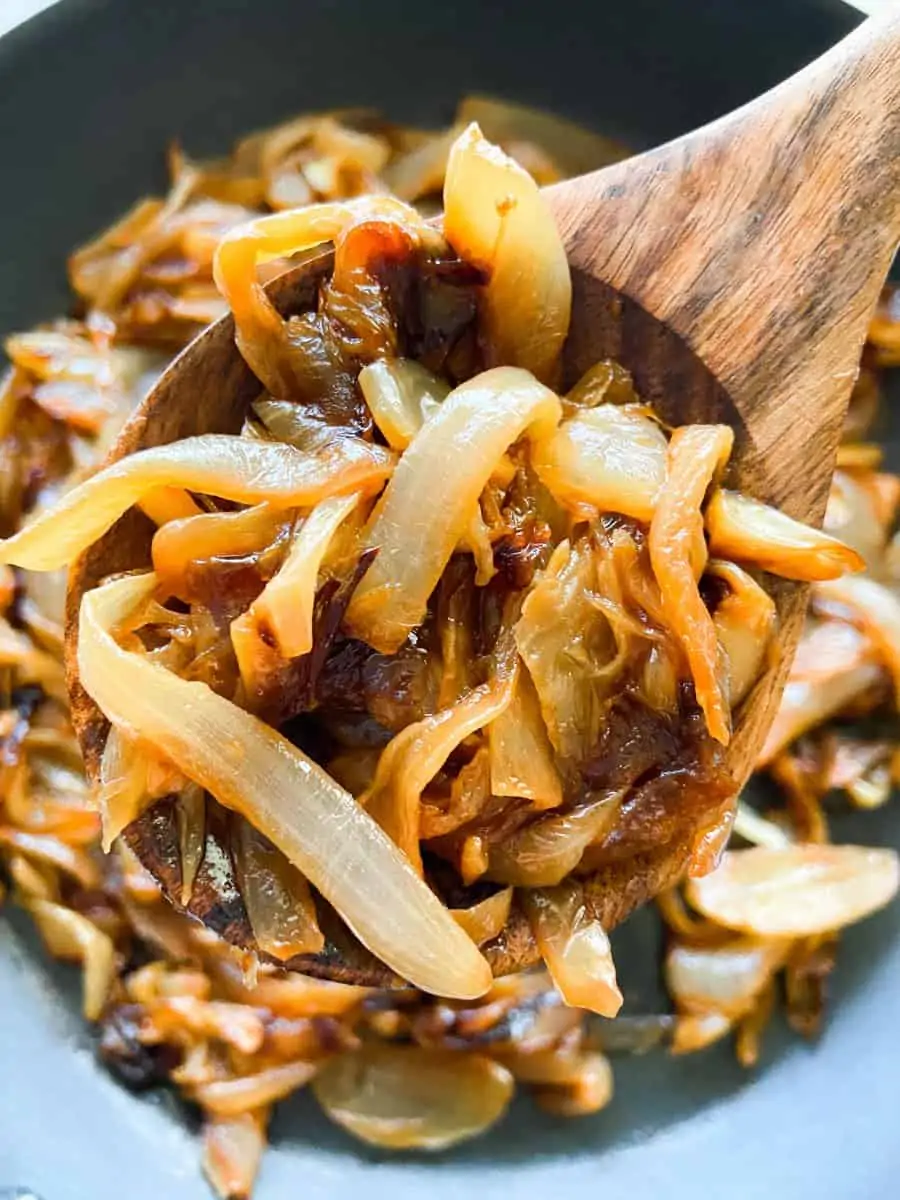
Expert Tips
Deglaze the brown bits with chicken stock, white wine, or balsamic vinegar.
If the onions start cooking too quickly or burning, add a little bit of water to the pan. The onions will absorb the moisture and the water will help prevent sticking.
For sweeter onions, add a small amount of sugar, about ½ teaspoon to teaspoon of sugar for the three onions in this recipe. Sugar also speeds up the caramelization process.
Serving Suggestions
As stated above, these delicious onions are incredibly versatile in their use. Their umami flavor adds flavor depth to whatever you pair them with. Here are a few of my favorite uses:
- On Burgers and Sandwiches - The sweet, cooked onions are a lovely addition to burgers and patty melts. Really, any sandwich could benefit from the addition of sweet, cooked onions.
- In Pasta - Toss a scoop of these sweet onions with pasta, parmesan cheese, chicken, and seasonings for an easy meal.
- Stirred Into Dips and Spreads - Add chopped caramelized onions to dips or spreads, like my Homemade French Onion Dip pair with crackers or toasted bread.
- With Sausage - Scoop a good helping of these delicious onions over sausage and pair with nice, grainy mustard.
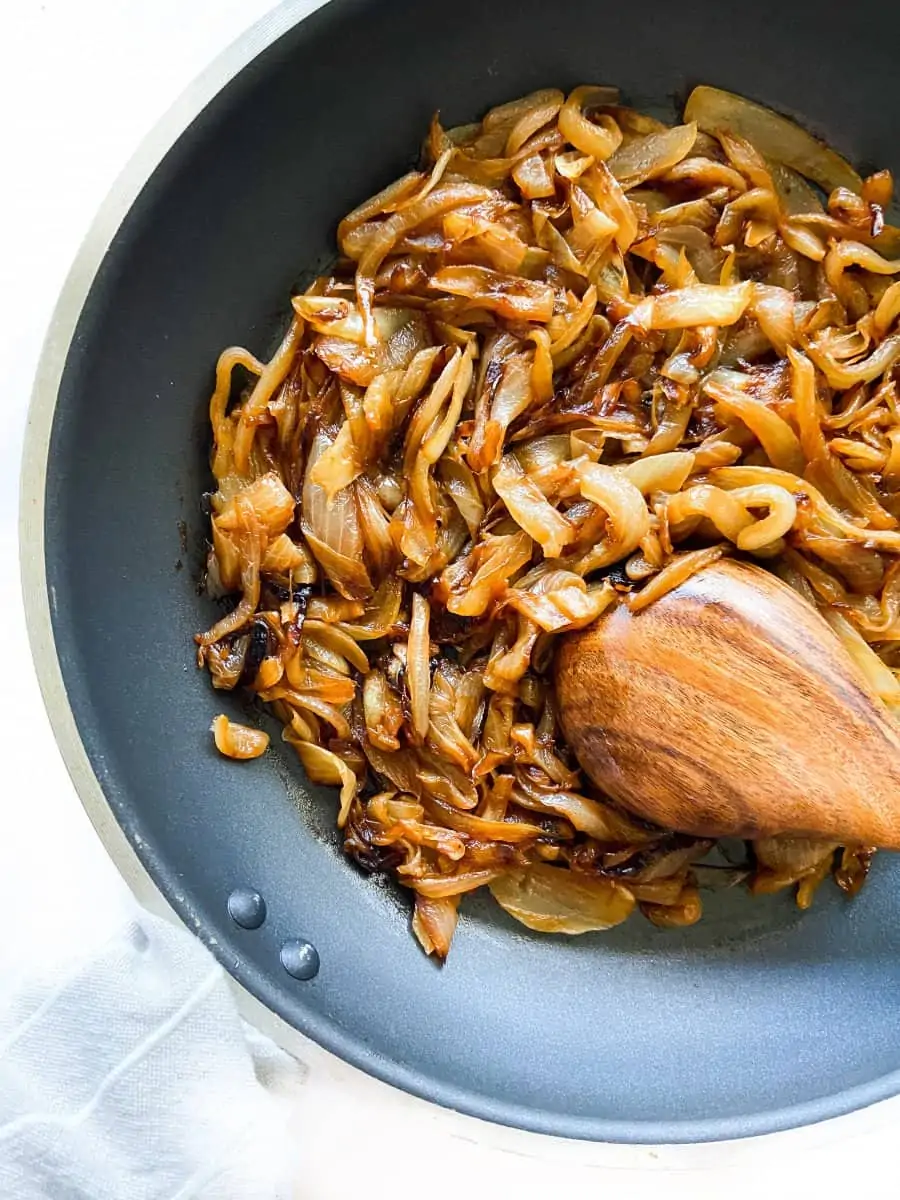
Other Recipes You Will Love
Knowing how to caramelize onions is a beneficial skill in the kitchen. While the process may be tedious, it is not at all difficult. The result is certainly worth it. And, the options are endless in their use. What are your favorite ways to use these sweet, delicious onions? Comment below.
📖 Recipe
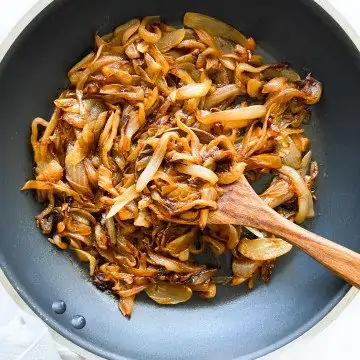
Caramelized Onions
Equipment
Ingredients
- 3 yellow or sweet onions
- 1 tablespoon olive oil
- 2 tablespoon butter
- pinch salt
Instructions
- Slice the onions: Trim the tip and end off of each onion. Carefully cut the onions in half and remove the skins. Thinly slice each half, slicing from root to stem. Do your best to cut in even slices for the most consistent cooking.
- Heat the pan and fats (olive oil and butter): Heat a large skillet over medium-high heat. Melt the butter with the olive oil.
- Add the onions and coat: Transfer all of the onions into the pan and evenly coat in the butter-oil mixture.
- Add salt and reduce the heat slightly: After 10 minutes of cooking, sprinkle a pinch of salt over the onions and toss to coat. Reduce the heat to medium.
- Allow onions to cook, stirring every so often: Allow the onions to cook, stirring about every five minutes or so, to ensure the onions do not burn or stick to the pan. *Do not over-stir or the onions will not brown. Add a little extra oil or a small amount of water if you find that the onions are burning. Cook for 20-30 minutes, until brown in color and desired doneness, is achieved.
- Store onions in an airtight container in the refrigerator for up to one week.
Notes
- You do not have to use both olive oil and butter, you can choose to use one of the other. If using just olive oil, start with two tablespoons and go from there.
- See the blog post for details on what type of skillet to use.
Nutrition
DID YOU MAKE THIS RECIPE? Please leave a star rating and review below!


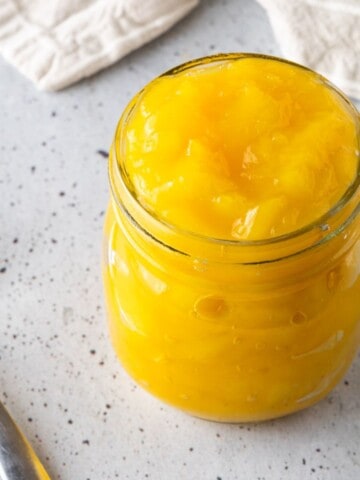
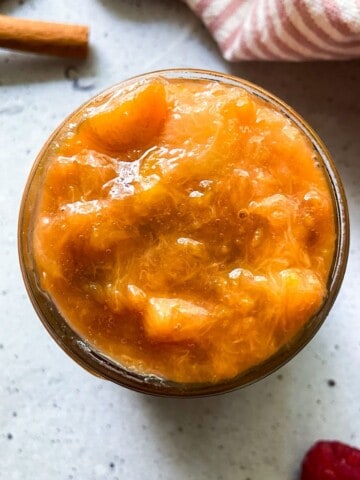
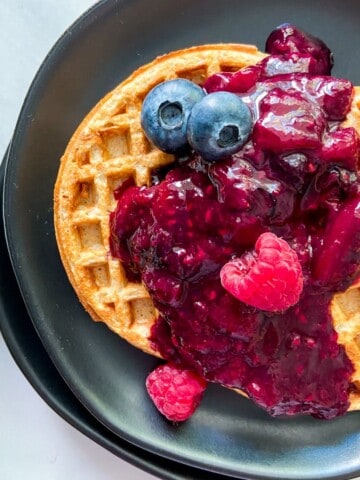
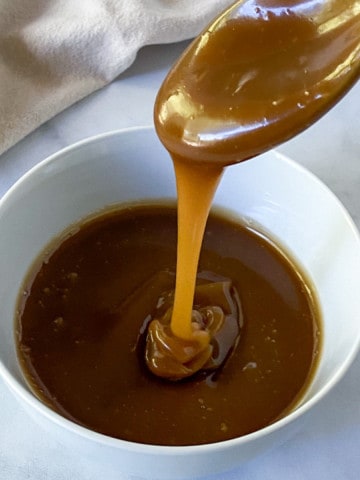
Comments
No Comments